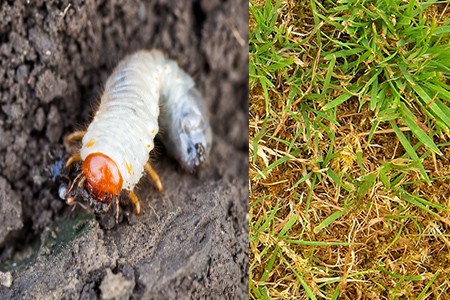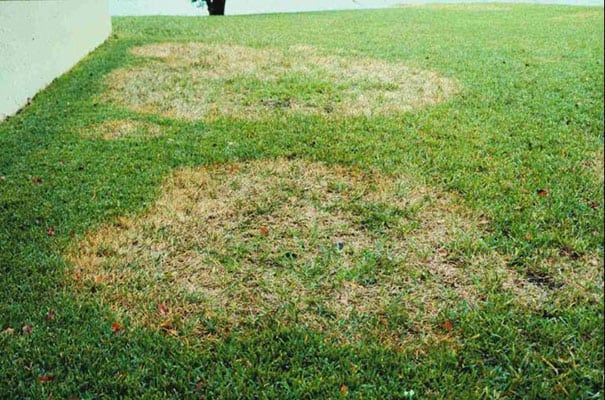Is that grubby grass or is there a fungus among us? Finding out could be a chinch.
As we start to emerge from the rainy season, our lawns may be a bit worse for wear. Tempco’s lawn maintenance and fertilizer team is hard at work this time of year analyzing and treating several lawn problems that present themselves as brown patches throughout the yard. During wetter months, grass grows nearly uncontrollably. Cutting it once or even twice a week is not uncommon. But what causes those brown, dry patches when most of the grass is lush and green? Is there a fungus among us? Or do we have to get to the root of the problem and treat grubs or chinch bugs?

Florida’s rainy season can cause lots of problems for our landscape. As dampness settles in, roots can rot which creates the perfect habitat for a number of pests – especially white grubs and chinch bugs. Grubs are the larva of June Beetles and can cause significant lawn damage. You’ll notice brown dead patches of grass and you may be able to lift parts of the yard like a carpet where grubs have been dining. Another telltale sign is a sudden interest from a flock of white ibis in your yard. White ibis has a long arc-shaped red beak that’s perfect for digging into the lawn and finding grubs – one of their favorite meals.
Chinch bugs are black and white and are one of the most damaging to Florida grass. Chinch bug damage also appears as yellow or brown patches and can occur year-round. However, grass that has been water-stressed or baking in the full sun constantly is the perfect host for these pests. Which means, autumn is prime time to assess the carnage.
Another common issue this time of year is brown patch or large patch fungus. Large patch fungus resembles skin cancer. It is irregularly shaped, discolored and has uneven borders that expand over time. The brown patches sometimes have an orange border and the centers seem to look sunken inspots. Most large patch fungus begins being a problem in the spring when weather conditions are best for fungal growth, however summer grasses may hide the problem for a while. Then, when autumn comes, the problem presents itself again.

Prevention:
They say an ounce of prevention is worth a pound of cure and that couldn’t be more true here. Proper lawn care that includes correct irrigation, mowing, and fertilizing keeps your lawn healthy. A healthy lawn is far less vulnerable to fungus and bad insect intruders. Make sure you are not over-watering or over-fertilizing your lawn or cutting it too short. These can cause problems with roots and healthy growth.
Solutions:
It’s important to have a professional evaluate your lawn to determine the cause. There are fungicides available as well as pesticides to control grubs and chinch bugs (another common lawn pest). Treating the right problem with the right solution is critical.